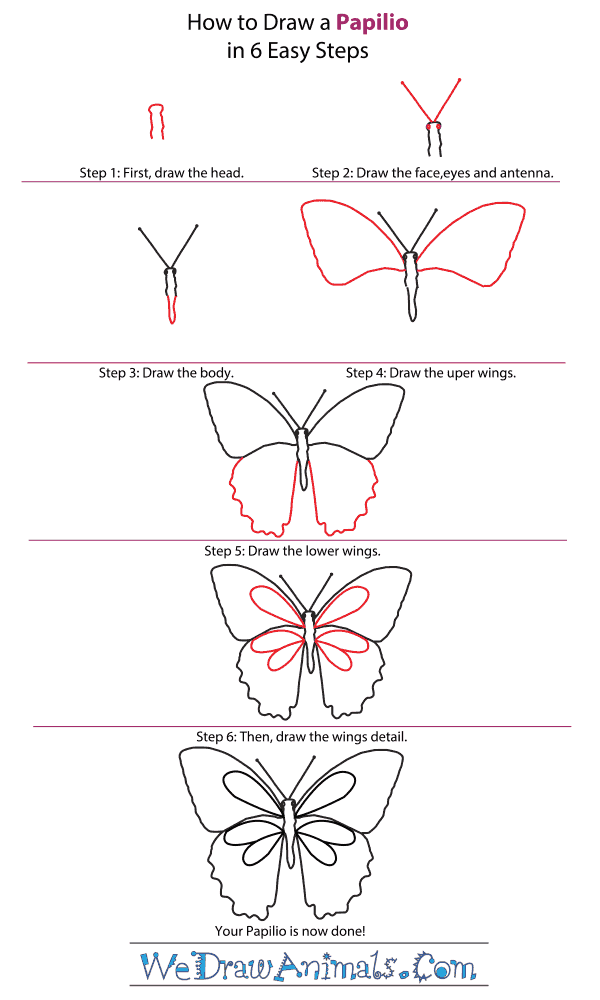In this quick tutorial you'll learn how to draw a Papilio in 6 easy steps - great for kids and novice artists.
The images above represent how your finished drawing is going to look and the steps involved.
Below are the individual steps - you can click on each one for a High Resolution printable PDF version.
At the bottom you can read some interesting facts about the Papilio.
Make sure you also check out any of the hundreds of drawing tutorials grouped by category.
How to Draw a Papilio - Step-by-Step Tutorial
Step 1: Begin by drawing the head. Make a rectangle with squiggly lines. Only draw three sides of the rectangle
Step 2: Draw the eyes and the antennas. Draw two dots at the top of the head and make tow lines coming out of the center of the top
Step 3: Draw the body by making two lines that meet in a curve at the end coming out of the head
Step 4: Draw a wing on each side near the head. They should be the same shape and size
Step 5: Draw the bottom wings with jagged lines. They should also be symmetrical with one another
Step 6: Draw the patterns on the wings to finish. Make water drop shapes coming from the center of the butterfly. Remember, butterfly patters are symmetrical
Interesting Facts about Papilios
Papillios are rare butterflies found only in Madagascar, which is a place in Africa. Papillios are black with yellow bands and white spots. Their bottom wing has a short tail. “Papillio” is Latin for butterfly, a flying insect. All butterflies hatch as caterpillars and live on the plant their mom left them. They make cocoons to develop into butterflies. They sleep for a while and then they wake up and break out of their cocoons. They then go out and live off flower nectar and fruit.
Did you know?
- There are 17,500 types of butterflies.
- Almost all butterflies, snails, beetles, and spiders on Madagascar can only be found there.
- Butterflies are found everywhere, but Antarctica.
- Madagascar has lost 90% of its original forests. Forests are thought to be the Papilio’s home of choice. People on Madagascar use to cut down forests and burn them to make room for houses.
- A lot of butterflies have ways to hide from predators. They also taste bad to the animals that would eat them. Most butterfly patterns hide the insects in flowers and leaves.
Lesson Plan Note: Papilos are the perfect excuse to study the island of Madagascar and its unique ecology.







